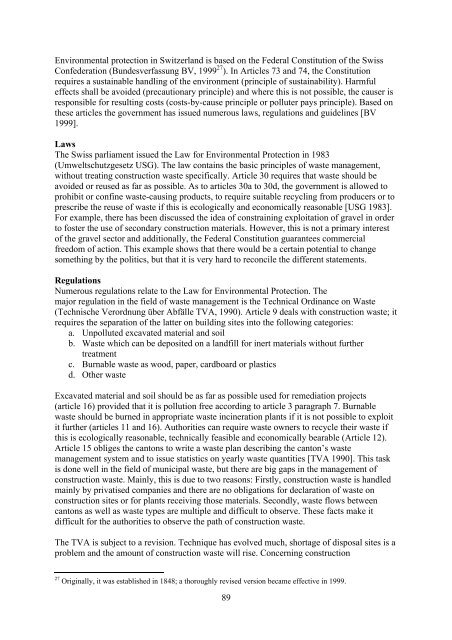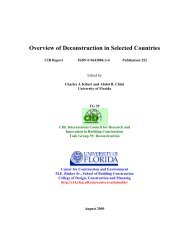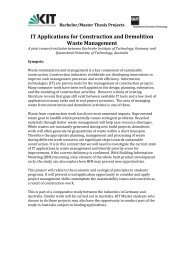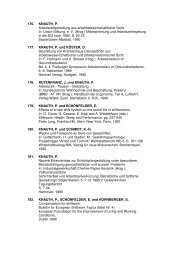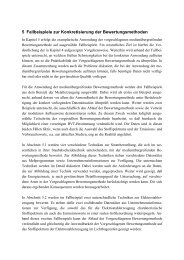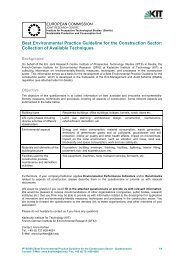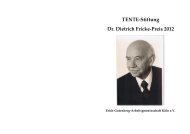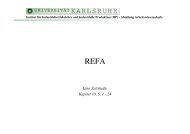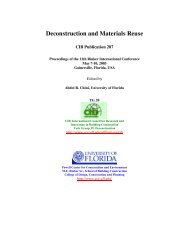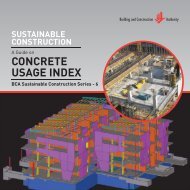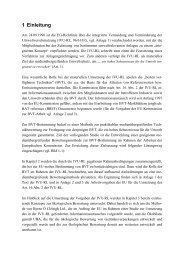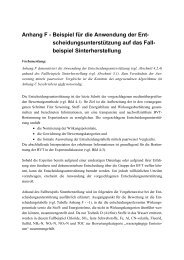Waste reduction final report -4 - Test Input
Waste reduction final report -4 - Test Input
Waste reduction final report -4 - Test Input
You also want an ePaper? Increase the reach of your titles
YUMPU automatically turns print PDFs into web optimized ePapers that Google loves.
Environmental protection in Switzerland is based on the Federal Constitution of the Swiss<br />
Confederation (Bundesverfassung BV, 1999 27 ). In Articles 73 and 74, the Constitution<br />
requires a sustainable handling of the environment (principle of sustainability). Harmful<br />
effects shall be avoided (precautionary principle) and where this is not possible, the causer is<br />
responsible for resulting costs (costs-by-cause principle or polluter pays principle). Based on<br />
these articles the government has issued numerous laws, regulations and guidelines [BV<br />
1999].<br />
Laws<br />
The Swiss parliament issued the Law for Environmental Protection in 1983<br />
(Umweltschutzgesetz USG). The law contains the basic principles of waste management,<br />
without treating construction waste specifically. Article 30 requires that waste should be<br />
avoided or reused as far as possible. As to articles 30a to 30d, the government is allowed to<br />
prohibit or confine waste-causing products, to require suitable recycling from producers or to<br />
prescribe the reuse of waste if this is ecologically and economically reasonable [USG 1983].<br />
For example, there has been discussed the idea of constraining exploitation of gravel in order<br />
to foster the use of secondary construction materials. However, this is not a primary interest<br />
of the gravel sector and additionally, the Federal Constitution guarantees commercial<br />
freedom of action. This example shows that there would be a certain potential to change<br />
something by the politics, but that it is very hard to reconcile the different statements.<br />
Regulations<br />
Numerous regulations relate to the Law for Environmental Protection. The<br />
major regulation in the field of waste management is the Technical Ordinance on <strong>Waste</strong><br />
(Technische Verordnung über Abfälle TVA, 1990). Article 9 deals with construction waste; it<br />
requires the separation of the latter on building sites into the following categories:<br />
a. Unpolluted excavated material and soil<br />
b. <strong>Waste</strong> which can be deposited on a landfill for inert materials without further<br />
treatment<br />
c. Burnable waste as wood, paper, cardboard or plastics<br />
d. Other waste<br />
Excavated material and soil should be as far as possible used for remediation projects<br />
(article 16) provided that it is pollution free according to article 3 paragraph 7. Burnable<br />
waste should be burned in appropriate waste incineration plants if it is not possible to exploit<br />
it further (articles 11 and 16). Authorities can require waste owners to recycle their waste if<br />
this is ecologically reasonable, technically feasible and economically bearable (Article 12).<br />
Article 15 obliges the cantons to write a waste plan describing the canton’s waste<br />
management system and to issue statistics on yearly waste quantities [TVA 1990]. This task<br />
is done well in the field of municipal waste, but there are big gaps in the management of<br />
construction waste. Mainly, this is due to two reasons: Firstly, construction waste is handled<br />
mainly by privatised companies and there are no obligations for declaration of waste on<br />
construction sites or for plants receiving those materials. Secondly, waste flows between<br />
cantons as well as waste types are multiple and difficult to observe. These facts make it<br />
difficult for the authorities to observe the path of construction waste.<br />
The TVA is subject to a revision. Technique has evolved much, shortage of disposal sites is a<br />
problem and the amount of construction waste will rise. Concerning construction<br />
27 Originally, it was established in 1848; a thoroughly revised version became effective in 1999.<br />
89


